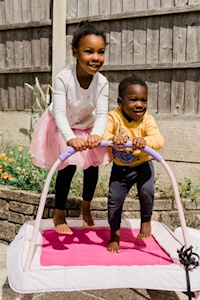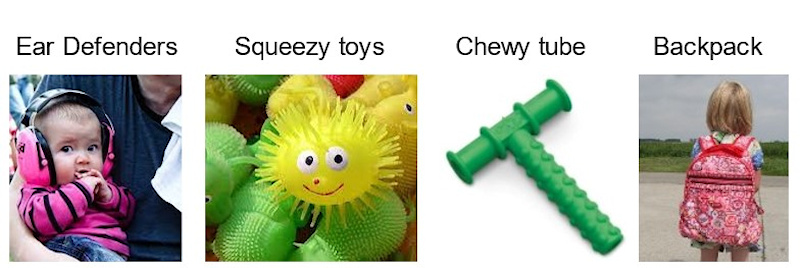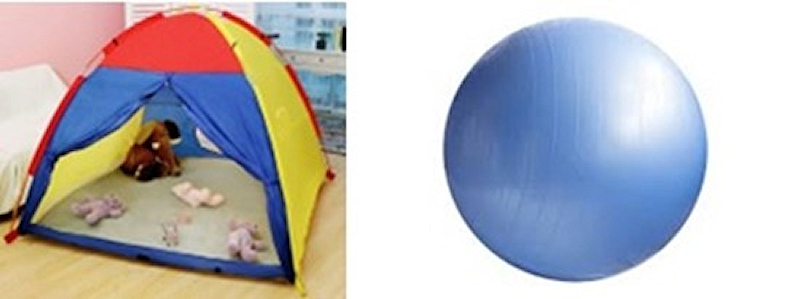Top tips for how to support your child

1. Take your child to the playground as much as possible
Playing on the playground equipment will give your child lots of opportunities to practice using their sense of balance and movement, improving their balance, strength, coordination and body awareness.
Useful things to try include:
- Balance beams - every time they move or take a step they feel their muscles and joints working.
- Seesaw - holding on and moving up and down.
- Climbing frame - placing hands and feet appropriately so practicing body awareness and motor planning.
- Zip wire - holding on tightly while you move.
- Swing - pushing yourself with your body and feet to get more momentum while moving backwards and forwards.

2. Help your child co-regulate by:
- lowering your voice.
- getting down to your child’s level.
- labelling emotions.
- helping them to express emotions in a safe way.
- doing slow breathing together.
This is particularly relevant for younger children, but even older children may still need their parents or carers help to regulate their emotions at times.

3. Try using sensory strategies to help your child regulate themselves
If your child seems inactive, passive or sleepy, you could try some alerting activities. These include jumping, fast swinging, climbing or oral stimulation (such as chewing on crunchy snacks).
If they seem overactive and or frequently upset and overwhelmed, you could try some calming activities. These include gentle rocking, a firm hug, rolling up in a mat or finding a calm space.
Watch the video below for some examples.
The same children may need both alerting and calming activities at different times. If you find some strategies that work well for your child, you can plan them into your child’s day, such as using calming activities after nursery or school, or before bed, or alerting activities before mealtimes if your child struggles to maintain their focus for this period.
You can click here to read a written transcript of this video.

4. Try using heavy work strategies with your child
These combine work on body awareness and movement and work well for both alerting and calming, so if you aren’t sure which your child needs, these could be a good place to start. They are similar to activities in the park, mentioned above. You could try one of these activities before sitting to read with your child or play a game, or before eating a meal.
- Pushing or pulling a wagon.
- Wheelbarrow walks.
- Animal walks – click here to see video which explains these.
- Jumping on a trampoline.
- Wall push-ups.
- Star jumps.
- Tug-of-war.
- Rolling/bouncing on a ball.
5. When you are out and about, carry a bag with sensory items
You can use these to help your child to regulate when out of the house. These will depend on your child’s specific sensory needs, but examples could include:

If your child finds hand-dryers distressing when out of the house, you may wish to carry paper towels instead.
6. Create a calming space for your child at home
This will help them regulate their sensory experience when needed. Again, this will depend on your child’s needs, but could include:
- A pop-up tent or other quiet space to use if feeling overwhelmed.
- A gym ball to bounce on, lie over or give firm pressure with.

7. If your child struggles to notice their internal body cues to eat and drink, they may need you to remind them
8. Look at our self-care advice page and videos for specific advice on self-care
If your child has difficulties with self-care or dressing due to sensory needs, you can find further advice and strategies for particular challenges on our self-care advice page.
Last updated10 Sep 2025


